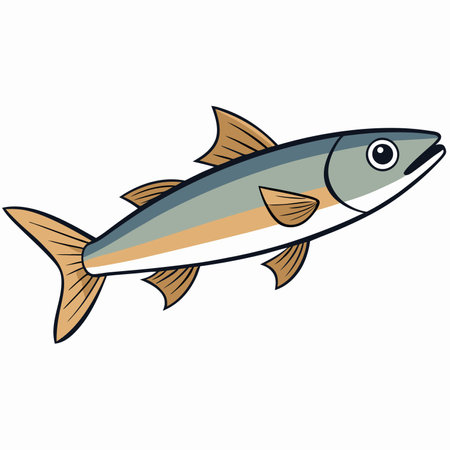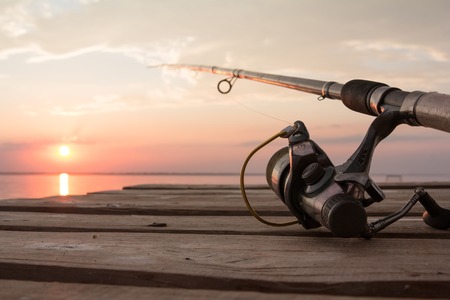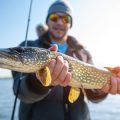Introduction to Walleye Fishing: River vs. Lake Adventures
If you’re looking to make unforgettable memories with your family or friends, walleye fishing offers a perfect blend of excitement and challenge. Whether you’re a seasoned angler or just getting your feet wet, the quest for walleye can take you on two very different adventures—casting lines into the dynamic currents of rivers or exploring the endless horizons of American lakes. Each setting brings its own character and requires a unique approach, making every trip a fresh experience. As we compare river and lake walleye fishing, youll discover how these environments shape not only the techniques you use but also the stories you’ll share around the dinner table later. So grab your rods and pack up some snacks; it’s time to dive into the world of walleye fishing, where every outing is a new opportunity for connection, learning, and maybe even a little friendly competition.
Best Locations: Finding the Hotspots
Locating walleye hotspots can be a family adventure that’s as rewarding as the catch itself! Whether you’re exploring flowing rivers or sprawling lakes, knowing where to look is half the battle. Local anglers often have insider tips, but there are also some tried-and-true ways to spot those productive walleye hangouts on your own.
Using Local Knowledge
Start by talking with bait shop owners, park rangers, and fellow fishermen. They’ll often share recent success stories and point you toward promising stretches of river or lake structures. Don’t be shy—walleye fishing can be a friendly community sport, and sharing info is part of the fun!
Natural Indicators
Pay attention to natural signs. In rivers, look for deep pools, current breaks behind rocks, and eddies where walleye like to ambush prey. In lakes, focus on drop-offs, submerged humps, weed edges, and rocky points. Early morning or evening hours near these features usually offer the best bites.
Scouting Tips for Rivers vs. Lakes
| Rivers | Lakes | |
|---|---|---|
| Key Structures | Deep holes, current seams, log jams | Weed beds, rocky points, drop-offs |
| Time of Day | Dawn & dusk; after rainstorms | Low light periods; overcast days |
| Scouting Tools | Polarized sunglasses, river maps | Fish finders, lake contour charts |
| Local Tips | Ask about recent water levels & clarity | Check for baitfish activity near shorelines |
A Family Approach to Scouting Hotspots
Get everyone involved by turning location scouting into a shared experience. Kids love spotting minnows darting in shallow water or helping mark interesting spots on a map. With patience and teamwork, you’ll soon find your own favorite walleye hotspots—making every outing memorable and successful!

3. Essential Gear and Tackle for Both Environments
Before you cast your line, let’s talk about what’s inside your tackle box! Whether you’re planning to fish for walleye in a flowing river or a sprawling lake, having the right gear makes all the difference. Here’s a friendly breakdown of what you’ll need to make your fishing adventure both fun and successful—no matter where you set up along the water.
Tackle Boxes: Organization is Key
First things first, keep your gear organized with a sturdy tackle box. Look for one with adjustable compartments—this helps keep your jigs, crankbaits, and hooks separated and easy to grab when that walleye bite starts heating up. For river trips, consider a waterproof option since things can get splashy on the banks. If you’re heading out on a boat in a lake, something compact and easy to carry works best so it won’t clutter up the deck.
Rods and Reels: Matching Your Environment
For rivers, a medium-light spinning rod (around 6’6” to 7’) gives you enough sensitivity to feel those subtle walleye bites while offering control in current. Pair it with a smooth spinning reel loaded with 6-10 lb braided or monofilament line—braid cuts through current but mono offers forgiveness if you’re new at this.
On lakes, especially when trolling or jigging deeper waters, a medium-action rod in the 7’ range is perfect. A reliable baitcasting or spinning reel lets you switch between casting crankbaits and dragging live bait rigs as conditions change.
Bait Setups: What Walleye Can’t Resist
No matter where you fish, live bait is king for walleye! In rivers, try using slip sinker rigs with nightcrawlers or minnows—let the current do some of the work as your bait drifts naturally. Jigs tipped with soft plastics are also effective, especially near rocky river beds.
Lakes call for versatility: bottom bouncers with spinner rigs attract walleye cruising along drop-offs or weed lines. Crankbaits that mimic small perch or shad work wonders when trolled across open water or along structure. Don’t forget to adjust your presentation based on water clarity—bright colors pop in murky rivers; natural hues blend in clear lakes.
Pro Tips for Both Locations
- Pack extra hooks and leaders—walleye have sharp teeth and snags are common.
- Carry a variety of weights to adapt to changing currents or depths.
- A quality pair of pliers helps remove tricky hooks from toothy mouths quickly and safely.
Getting Ready for Your Next Adventure
The best part? Most walleye setups can be mixed and matched between rivers and lakes with just a few tweaks. Take time to experiment, involve your family in organizing gear, and share stories about “the one that got away.” That’s what makes every trip special!
4. Key Techniques for River Walleye
Fishing for walleye in rivers is a special experience that often becomes a family tradition, especially when you know the right techniques to boost your catch rates. Over the years, our family has spent countless weekends exploring local rivers across the Midwest, learning which tactics work best in moving water. Here’s a breakdown of river-specific strategies that have proven successful for us—and might just help you hook into more walleye on your next outing!
Current Breaks: The Walleye Hotspot
Walleye love to hang out behind current breaks where they can rest and ambush prey. Our kids call these “walleye hideouts” because once we find them, action usually follows quickly! Look for:
- Large rocks or boulders
- Downed trees or log jams
- Bends and points in the river
- Bridge pilings or other manmade structures
We usually anchor just upstream and cast lures downstream so they drift naturally with the current into these protected zones.
Drifting Jigs: A Proven Family Favorite
One of our go-to methods is drifting jigs along the bottom. This technique lets you cover water efficiently while presenting bait right in front of hungry walleyes. Here’s how we do it together:
| Step | What We Do | Tips from Our Family |
|---|---|---|
| Select Jig Size | Use 1/8 to 1/4 oz jigs depending on current strength | Lighter jigs for slower water, heavier for faster currents |
| Add Live Bait | Tipped with minnows or nightcrawlers | Minnows are our top pick during spring and fall runs |
| Drift with Current | Let the boat drift naturally or walk the jig downstream from shore | Keep your rod tip low and feel for subtle bites—kids love this! |
| Set the Hook Quickly | A sharp snap of the wrist does the trick | We turn it into a friendly family competition! |
Other Effective Tactics We Love:
- Casting crankbaits: Especially effective at dawn or dusk near shallow riffles.
- Slip bobber rigs: Great for fishing eddies and seams where walleyes wait for food.
- Bouncing bottom bouncers: Ideal for deeper river channels.
A Family Tip:
If you’re new to river walleye fishing, start with areas close to home and keep it simple. Kids especially enjoy seeing their lure drift past visible rocks and logs—plus, everyone gets excited when that first fish strikes! Sharing these moments together makes each trip memorable while building angling confidence as a team.
5. Proven Methods for Lake Walleye
If you’ve ever found yourself out on a lake, rod in hand, wondering how to land that elusive walleye, you’re definitely not alone! Whether you’re introducing your kids to fishing or looking for new techniques to up your game, understanding proven lake methods is key. Compared to river fishing, lakes require a unique approach since walleye can be more spread out and the water conditions are different. Here’s what works best based on real experience—perfect for both beginners and seasoned anglers.
Trolling: Covering Water Efficiently
Trolling is by far one of the most effective ways to find active walleyes in lakes. By slowly moving your boat with crankbaits or spinner rigs behind you, you can cover lots of ground and locate fish schools that might otherwise be hard to find. Adjust your speed according to water temperature—slower in cold water, faster as it warms up. My kids love trolling because there’s always action and excitement when a walleye hits!
Slip Bobbering: Precision at Its Best
If you want a more hands-on approach that’s fun for the whole family, try slip bobber fishing. This technique lets you suspend live bait like leeches or minnows at exactly the right depth above weed beds, drop-offs, or submerged structures where walleyes lurk. It’s especially productive during early mornings or late evenings. I’ve found it’s also great for teaching patience and anticipation—there’s nothing like watching a bobber disappear under the surface!
Choosing the Right Spots
Unlike rivers where current dictates fish location, in lakes walleyes often hang near underwater points, rocky humps, or transition zones between sand and gravel. Use electronics if you have them, but don’t underestimate the power of observation—look for baitfish activity or subtle changes in water color.
Gear Tips and Family-Friendly Advice
For trolling, medium-action rods with line counters make it easy to repeat productive depths—a huge help if you have younger anglers onboard. For slip bobbering, choose sensitive rods so everyone can feel even the lightest bite. Don’t forget to pack plenty of snacks and sunblock; happy kids mean longer (and more successful) days on the water!
Why These Tactics Work
Lakes can be intimidating because of their size and structure variety, but these time-tested methods help narrow things down and keep fishing exciting for everyone. Whether you’re making memories with your kids or fine-tuning your own skills, mastering trolling and slip bobbering will bring more walleye—and smiles—to your next lake adventure.
6. Seasonal Strategies and Local Wisdom
Understanding how walleye behavior shifts throughout the year is key to successful fishing, whether you’re casting lines in a river or a lake. As any seasoned angler in the U.S. will tell you, each season brings its own set of challenges and opportunities—and adapting your approach can make all the difference.
In spring, when rivers swell with runoff and lakes begin to thaw, walleyes become more active and move toward shallow areas for spawning. In rivers, focus on slower-moving pools or eddies just off main currents—walleye like to rest here after their upstream journey. In lakes, try targeting rocky shorelines or gravel beds where they lay their eggs. Locals often swear by using jigs tipped with minnows or soft plastics this time of year, as the water is still chilly and baitfish are abundant.
Come summer, both river and lake walleyes shift deeper as water temperatures rise. In lakes, use crankbaits or bottom bouncers along drop-offs and weed edges during early mornings or late evenings when walleye are most active. River anglers might drift live bait rigs near submerged logs or deep holes—especially on overcast days. Pay attention to water clarity: after heavy rain, rivers may run muddy, so switch to brightly colored lures that stand out.
Fall brings another change as walleye feed heavily to prepare for winter. This is prime time in many American regions, with local wisdom guiding anglers to target points where rivers enter lakes or below dams in river systems—places where baitfish congregate. Trolling slow-moving crankbaits or jigging with nightcrawlers often yields great results.
Winter ice-fishing is a cherished tradition in northern states. Walleyes gather under the ice in deeper basins of lakes or slower holes in rivers. Small jigging spoons tipped with minnows can entice bites when fish are sluggish. Don’t be shy about chatting up locals at the bait shop—they’ll often share which spots are hot or what colors are working best.
Ultimately, paying attention to seasonal patterns and listening to local advice will help you connect not just with more fish, but also with the community of American anglers who know their waters inside and out.
7. Family Fun and Conservation
One of the most rewarding parts of fishing for walleye, whether you’re on a winding riverbank or a peaceful lakeshore, is sharing the adventure with your family. There’s something truly special about teaching your kids not just how to cast a line, but also the importance of respecting nature and practicing good fishing etiquette. Explaining why we release undersized walleyes or pick up our trash fosters a sense of responsibility in young anglers. These moments become teachable opportunities—discussing catch-and-release practices, the significance of local regulations, and the impact of our actions on future walleye populations.
Family fishing trips are about more than landing the biggest fish. It’s the laughter when someone gets their line tangled, cheering each other on, and sharing stories as the sun sets over the water. Whether you’re exploring new river spots together or returning to your favorite lakeside dock, these experiences create lasting memories that kids will cherish for years. By weaving conservation lessons into your outings, you help ensure that America’s rivers and lakes remain thriving habitats—so future generations can enjoy walleye fishing just as much as we do.


